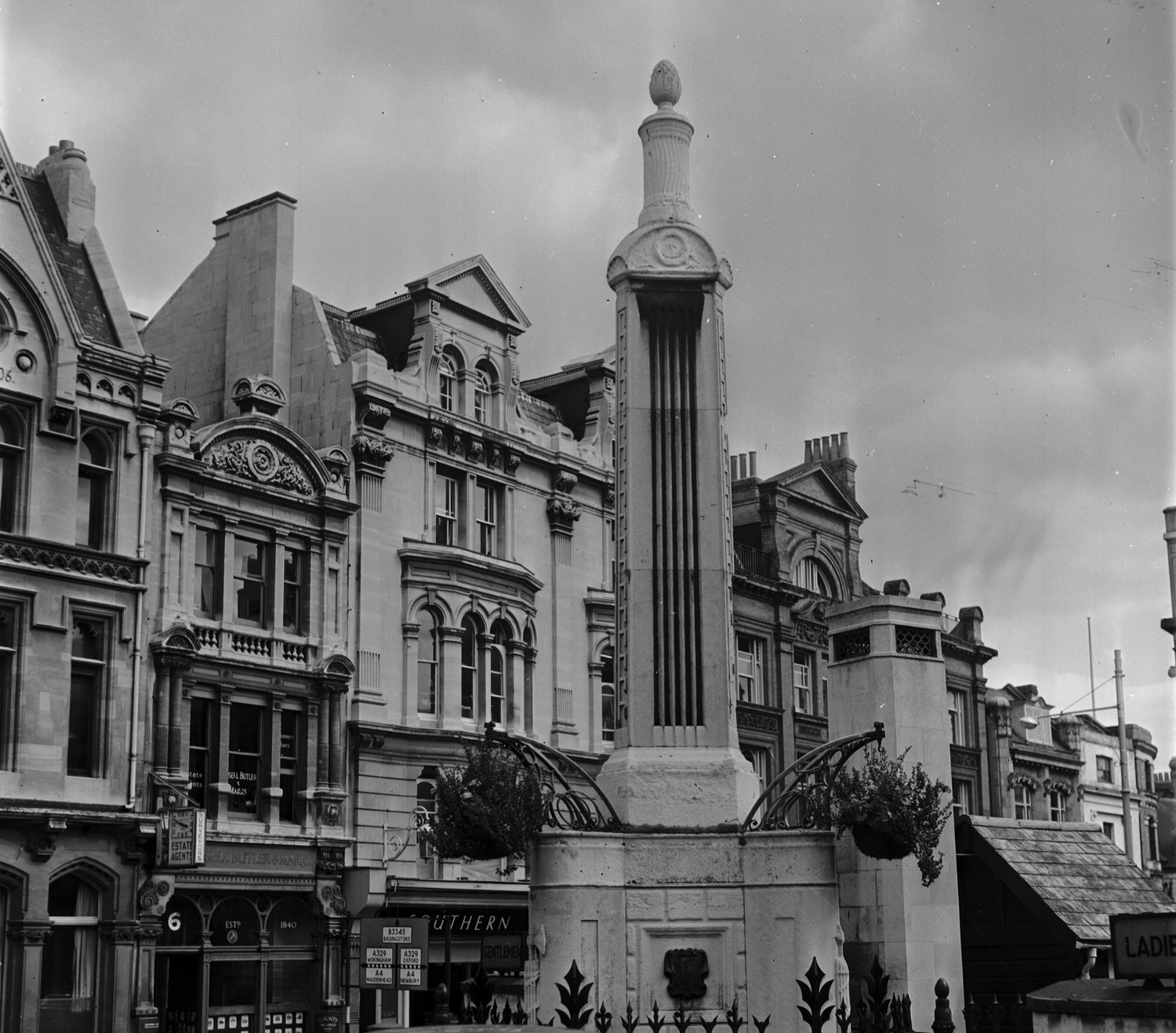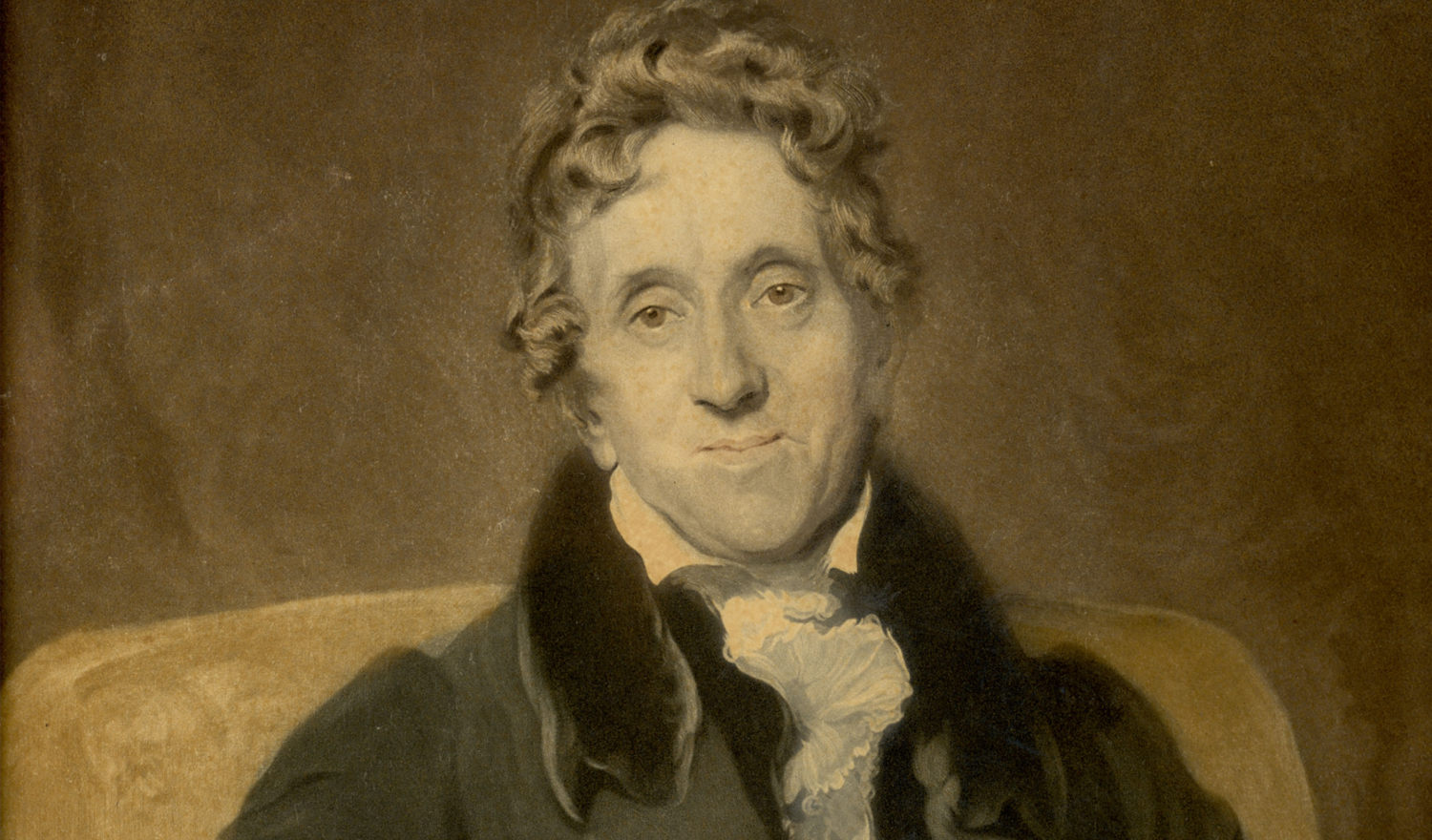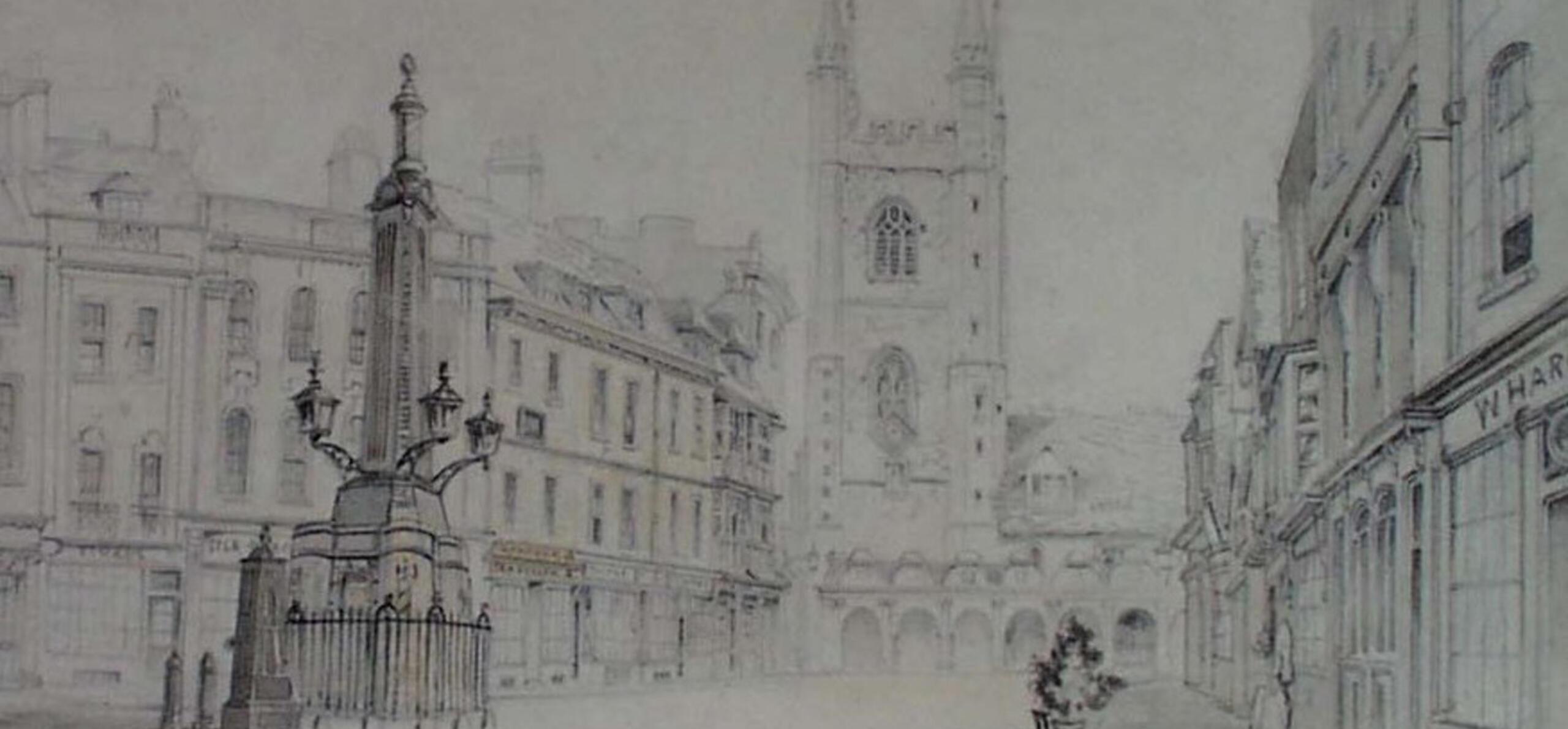Many of you may have been out and about this weekend exploring Reading during the annual Heritage Open Days. One of Reading’s most historical gems is the Simeon monument in the Market Place – an elegant Portland stone obelisk with lamps. This monument was commissioned in 1804 by Edward Simeon, a successful London merchant and director of the Bank of England, but he maintained links with Reading where he married and was eventually buried. Its designer is even more famous as the architect of the Bank of England - Sir John Soane.
Simeon's gift was regarded by some as vote catching for his brother, John, who had been MP for Reading and was trying to win the seat again. A letter in the Reading Mercury said the gift was ‘an attempt to bias the heads of the Borough in his favour by setting up in the market-place a paltry gewgaw thing without use or name’. In fact the monument was commissioned to improve the lighting of Reading’s Market Place and also forced wagon drivers to take a more regular line across the market.

Simeon monument in Reading Market Place in 1962 from the Museum's Reading Chronicle Collection
John Soane was born on 10 September 1753 at Goring-on-Thames not far from Reading. Soane’s father, also John, was a bricklayer whose trade was supplied by the many brick and tile kilns in the area (the Reading clay is heavy and ideal for brick making). From the age of eight John Soane attended a private school in Reading run by William Baker.
In 1768 Soane seized the opportunity to become a pupil of the architect George Dance, then Clerk of Works to the City of London. In 1771, just before his eighteenth birthday, Soane was admitted as a student of architecture at the Royal Academy of Arts. This offered an annual course of six lectures given by the Professor of Architecture, as well as lessons in perspective, access to the Library and the chance to compete for the Academy’s prizes. In 1776 Soane was awarded the gold-medal prize for his design for ‘A Bridge of Magnificence’.
Soane winning design was much influenced by French neo-classicism - characterized by a revival of classical Greek and Roman styles. Neoclassicism replaced the rococo style and was inspired by the excavation of the Roman towns of Pompeii and Herculaneum, which began in 1748.
Also influential were the cultural studies and theories of the German art historian Johann J Winckelmann (which revived Greek styles). Winckelmann identified the most important elements of classical art as being ‘noble simplicity and calm grandeur’. Neoclassical artists and architects sought to capture these qualities by copying classical styles.
Soane’s prize-winning triumph led to his election to the Academy’s Travelling Scholarship which enabled him to make the Grand Tour. He departed on his Grand Tour in 1778, travelling to Rome, where he mixed with other English travellers, and measured and sketched the great monuments of antiquity such as the Pantheon. After Rome he travelled to Naples, visiting Pompeii, Vesuvius and Paestum.
Soane’s trip had a life-long influence on his work – becoming a leading figure of the neo-classical movement, but developing his own individual and inventive architectural style. In his lifetime he had many critics who referred to his buildings as having ‘peculiar defects’ or ‘novelties’. The rise of Modernism in the 1920s led to a reassessment of his work and he came to be seen as ‘the first modern architect’. Today his work continues to inspire contemporary architects and designers.
In 1788 Soane was appointed architect to the Bank of England and later became responsible for the public buildings in Whitehall and Westminster. He also designed a new Royal Entrance to the House of Lords and new Law Courts. His turned his own home in Lincoln’s Inn Field into a museum to house his large collection of art, architectural models, and antiquities.
In Reading Soane also built a brewery and brewery house for the Simonds family at Seven Bridges, which was demolished in about 1900, and he designed a house for Lancelot Austwick (later Mayor of Reading) in Friar Street next to Greyfriars Church. The railings and side doors still survive in front of the former vicarage – now a nursery.

Sir John Soane, mezzotint print by C.Turner, after a painting by Sir Thomas Lawrence
This coloured mezzotint was published on 18 January 1830 and is based on a portrait painted by Sir Thomas Lawrence between 1828-29. The original oil painting can also be seen at the Sir John Soane's Museum in London; the Trustees of the Museum gave this print to Reading Museum in 1916. The Model Room at the Museum still includes the original wooden model of the Simeon Monument. His former London home reflects his interest and is a must and its interiors are the best surviving examples of Soane’s work. The contrasting effects of light from domes and concealed skylights, and the flow of space through the rooms, produced what Soane called ‘the poetry of architecture’.
The Simeon Monument is one of Soane's smaller masterpieces and was restored by Reading Borough Council in 2007. Stonework was cleaned with areas of repairs, recarving and repointing. Metalwork including the iron railings and lamp brackets were repaired and repainted, and three new brass lanterns were installed, based on the originals, lighting the Market Place once again.
Further reading
Adam Sowan (2007) A Mark of Affection - The Soane Obelisk in Reading, Two Rivers Press





